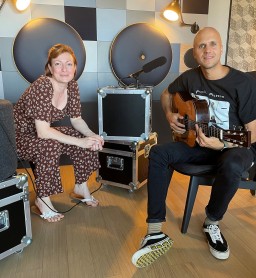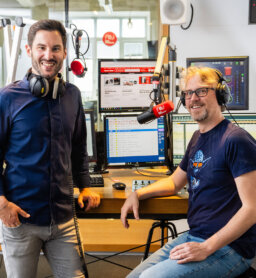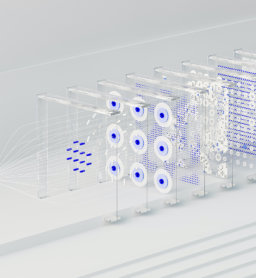Talk of the demise of radio started as early as 1980, when a band called The Buggles came out with a song called “Video Killed the Radio Star” – which would become the unofficial anthem for the emerging genre of music television. At last, people had images to go with the sound! So it was hardly surprising that just four years later Queen would express their grave concerns for the fate of the old friend that had provided the soundtrack to their youth in their smash hit “Radio Ga Ga”. And the iconic UK rockers’ fears were not that misplaced, as it happened.

Listen up...
Today is World Radio Day – and deservedly so. After all, no other medium has had its obituary written so often, but still manages to emerge victorious time after time. And it will be no different in the future. Radio stations will continue to make people sit up and listen. With a smart combination of hits from the 80s, 90s and today’s new media technology hits.
Thema:
DAB+
digital and analogue
future radio
Radio App
The past three decades have been pretty up and down for radio stations. Faced with declining or stagnating listenerships, the competition has just got more and more fierce over the years. But none of radio’s competitors – not music videos, cassette recorders, CDs or MP3 players – has managed to squeeze it out. Yet. While the essence of live radio has remained pretty much unchanged over the years, technology has come on in leaps and bounds. Digitalisation, streaming services and on-demand services are the major competitors these days – and at the same time they represent a massive opportunity for radio. If radio stations are able to bring together all of the things that listeners like about Spotify and all the others, then they will continue to have a place in listeners’ hearts for years to come. Or as Queen put it: “you’ve yet to have your finest hour”.
Digital is the better analogue
One person who doesn’t seem to share the concerns about the future of radio and is, in fact, really positive about it is James Cridland. For this radio futurologist, all of the competing media are basically radio anyway, only on different platforms. And the knack will be to bring them all together. His vision: when a listener turns on the radio of the future, the first thing they will hear will be one of their favourite songs. Followed by the presenters, in an extension of live radio as we know and love it. And every morning at 7.12 (and not at half past the hour) the traffic news, because the radio knows that they are off to work in three minutes.
A custom radio schedule for everyone listening digitally. But that doesn’t mean that stations will simply stop UHF broadcasting. Both markets will be served, albeit in a slightly adapted form. At least for as long as the frequencies are around. In Norway all radio stations were forced to move over to DAB+ digital broadcasts in 2017. Switzerland and Denmark are set to follow suit some time soon. And this service is also available in Austria: DAB+ Österreich. With technology that brings better sound quality and a greater choice of stations for listeners, stations are going to have to up their game and come up with new ways of standing out from the crowd. One example from America shows a possible way forward.
App that just
loves radio
iHeartRadio is a digital service offered by one of the country’s biggest radio companies, making it predestined to play a leading role in shaping how we listen to music in the future. Its app offers a stack of features that are missing from conventional radio sets. In addition to live streams of different schedules, options included podcasts and playlists curated by iHeartRadio-DJs – as well as Your Weekly Mixtape. The latter is a personalised playlist featuring 30 songs which is updated every Monday with songs that perfectly match the individual user’s preferences – which is the main difference to Spotify, which is much more about discovering totally new things and can be a little hit or miss. And what’s more, iHeartRadio also uses intelligent technology to bridge the otherwise unavoidable gaps between individual songs, just like a DJ set. Live feeling on live radio.
Radio that revolves around listeners’ likes
One thing seems to be clear – there’s no getting away from some kind of digital offering for radio stations, with or without their own app. And that’s down to high incidence of smartphone usage, an area that seems to be confirming what radio guru James Cridland predicted. 32 percent of “radio time” on mobile phones is accounted for by on-demand services (podcasts, individual programmes from a listening library etc.), 28 by the user’s own songs and still just under 25% by live radio. Put another way, live radio supplemented by on-demand content is what is going to work in future. This is also down to the fact that conventional radio is an older-generation medium. Younger listeners use streaming services and podcasts – strictly when they want to, and on their own terms. But to win them over or get them to return to the fold as radio listeners, stations are going to have to make their on-demand content available in the places where millennials and Gen Zers go to find content: on Spotify and competitor services or in the iTunes store. A small price to pay for higher listener numbers.
Play me my favourite station
In the United Kingdom there are clear signs that the changeover to digital radio, with shows and podcasts now available on demand, has had a positive effect on listener numbers – including for live radio. People are already talking about a second golden age of radio. At the end of the day, virtually every single household uses smartphones and tablets and communication increasingly plays out via smart speakers (such as Amazon’s Alexa). On top of that, most cars only have digital radios now.
It has never been so easy for people to listen to the radio and hear the songs or content they want without being tied to specific locations or schedules. After all, radio has always been more than just music. Radio has always been about emotions and the people that tell stories on it. A special intimacy between presenter and listener even though they are far away from each other. Today, that is even more likely to be the case. But even if listeners prefer the latest BBC podcast from London, they are still bound to tune in for the local news. Presumably using voice command.
Categories

Hungry for something new?
The new podcast from PENNYlive
MAXFIVE

Footwear El Dorado
Appreciation of people and natural forms is precisely what sets legero united apart from the rest
MAXFIVE

New brand radio for MediaMarkt
“Radio MediaMarkt” – now live in all stores and nationwide via DAB+
MAXFIVE
